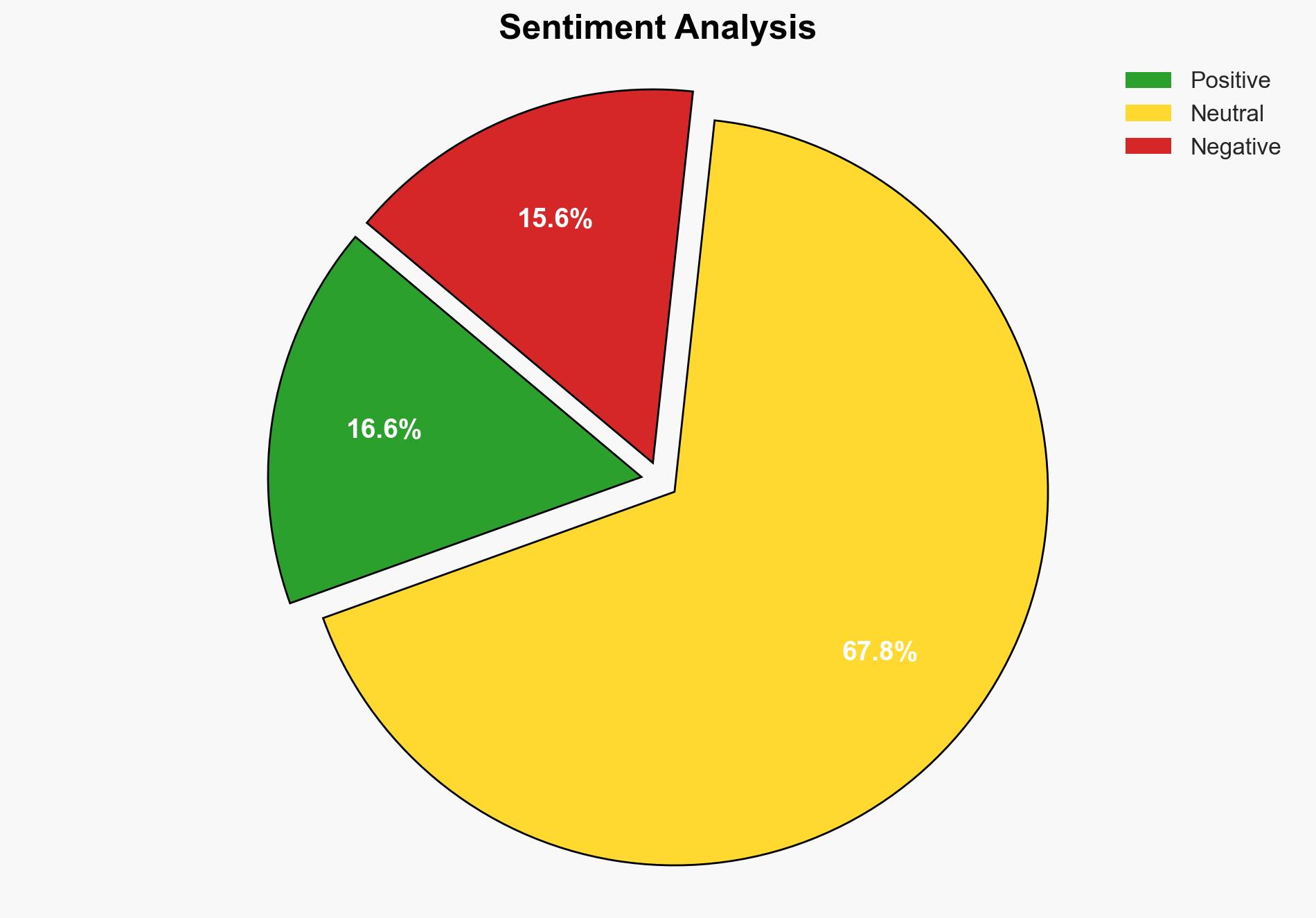Startup wants to mitigate risk of state-actor underwater fibre optic cable sabotage by using a decades-old technique – TechRadar
Published on: 2025-03-22
Intelligence Report: Startup wants to mitigate risk of state-actor underwater fibre optic cable sabotage by using a decades-old technique – TechRadar
1. BLUF (Bottom Line Up Front)
A startup is employing a decades-old technique, Distributed Acoustic Sensing (DAS), to mitigate the risk of sabotage to underwater fibre optic cables by state actors. This technique enhances the detection of disturbances in fibre optic signals, identifying potential threats such as drones, vessels, or divers. The initiative is crucial given recent incidents in the Baltic Sea, highlighting vulnerabilities in global internet infrastructure. The deployment of DAS in the North Sea has demonstrated its potential, prompting interest from NATO and the European Union in enhancing subsea security.
2. Detailed Analysis
The following structured analytic techniques have been applied for this analysis:
General Analysis
The use of DAS represents a strategic advancement in subsea security, leveraging fibre optic cables not only for data transmission but also as a surveillance tool. This dual-use capability addresses the increasing threat of sabotage, which poses significant risks to global communications. The steady number of cable faults annually underscores the persistent vulnerability of these infrastructures. The startup’s approach aligns with broader security efforts, including NATO’s Baltic Sentry mission, which underscores the geopolitical importance of securing subsea cables.
3. Implications and Strategic Risks
The primary risk involves the potential for state actors to disrupt global internet infrastructure, impacting national security and economic stability. The reliance on fibre optic cables for data transmission makes them a critical target. The deployment of DAS could mitigate these risks by providing early warnings of sabotage attempts. However, the technology’s limitations, such as the need for regular signal interrogation points, may affect its efficacy. The growing interest from military and governmental bodies indicates a recognition of these risks and the need for robust countermeasures.
4. Recommendations and Outlook
Recommendations:
- Enhance investment in DAS technology to improve detection capabilities and expand its deployment across critical subsea routes.
- Encourage international collaboration to standardize subsea cable security measures and share intelligence on potential threats.
- Implement regulatory frameworks to ensure the protection of subsea infrastructure as a matter of national security.
Outlook:
In the best-case scenario, widespread adoption of DAS could significantly reduce the risk of sabotage, ensuring the resilience of global communications. In the worst-case scenario, technological limitations and lack of international cooperation could leave subsea cables vulnerable to attacks. The most likely outcome involves gradual improvements in subsea security, driven by technological advancements and increased geopolitical awareness.
5. Key Individuals and Entities
The report mentions significant individuals and organizations, including Daniel Gerwig, Burdette, Thorsten Benner, and Efosa. These individuals are associated with the development and analysis of DAS technology and its implications for subsea security.





